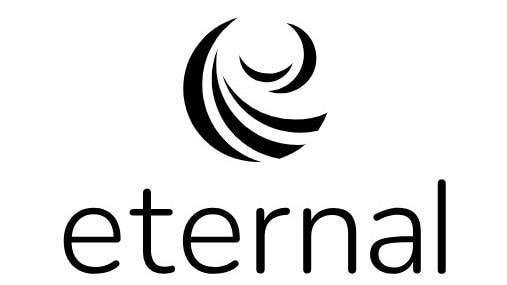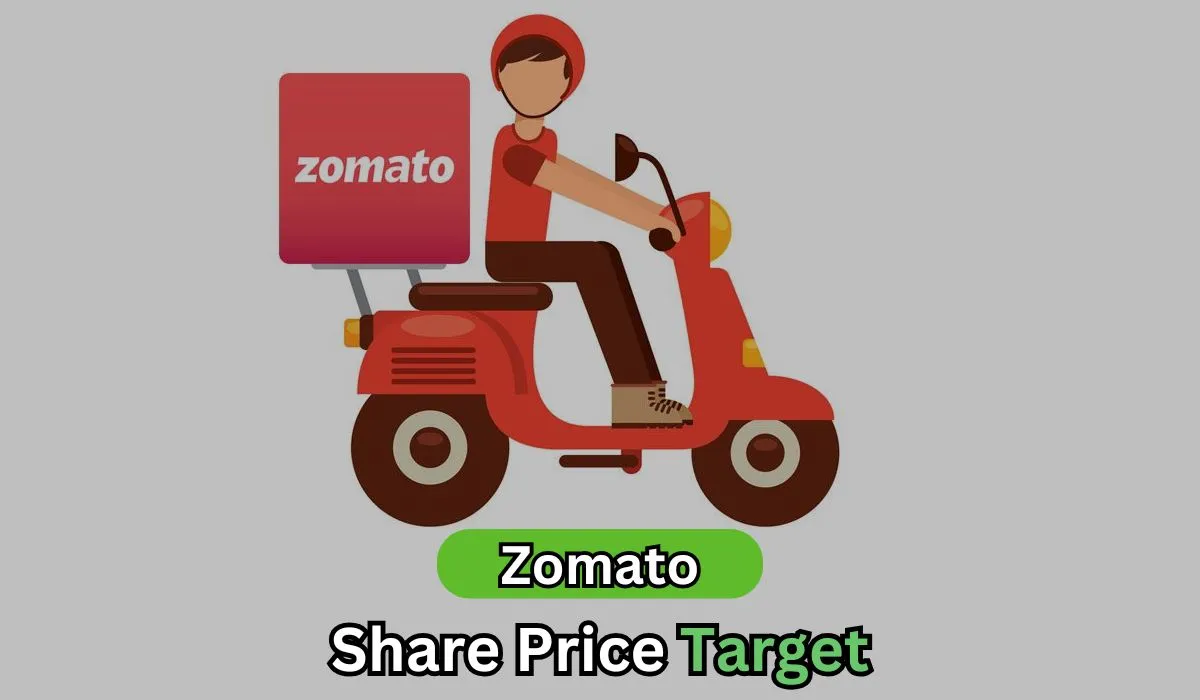Eternal (Zomato) was listed on the National Stock Exchange (NSE) on July 23, 2021. In the last three years, its stock has given a massive return of more than 300%. Will it continue to provide such impressive returns in 2025 and in upcoming years as well? Let’s explore Zomato’s future growth potential and the Zomato share target price 2025 to 2050 in this article.
About Eternal (Zomato) Ltd.

Zomato was established in 2008. In February 2025, it rebranded as Eternal to reflect its diversified business model beyond food delivery. It offers a variety of services, including food delivery and hospitality, and provides restaurant discovery, online ordering, and table reservation solutions.
Eternal (Zomato) Businesses
Eternal Ltd. operates four main businesses:
- Zomato: Zomato is Eternal’s core food delivery service, allowing users to discover restaurants, order food, and have it delivered.
- Blinkit: Blinkit is Eternal’s rapid delivery platform, offering groceries and essentials within minutes.
- District: District is Eternal’s platform for event ticketing and experiences. Launched in November 2024 after acquiring Paytm’s event ticketing subsidiaries, it offers users access to a variety of events and entertainment options.
- Hyperpure: Hyperpure supplies fresh and high-quality ingredients like grains, vegetables, and meat to restaurants.
Zomato Fundamental Analysis
| Stock Name | Zomato Ltd. |
|---|---|
| Market Cap | ₹ 2,26,494 Cr. |
| 52W High | ₹ 305 |
| 52W Low | ₹ 146 |
| Stock P/E (TTM) | 342 |
| Book Value | ₹ 31.4 |
| Dividend Yield | 0.00 % |
| ROCE | 3.18 % |
| ROE | 2.08 % |
| Face Value | ₹ 1.00 |
| Industry PE | 42.1 |
| Price to book value | 10.6 |
| Debt to equity | 0.07 |
| PEG Ratio | 19.7 |
| Quick ratio | 3.47 |
| Share holder | March 2023 | March 2024 | March 2025 |
|---|---|---|---|
| FIIs | 54.61% | 55.11% | 44.36% |
| DIIs | 0.08% | 55.28% | 23.47% |
| Government | 0.00% | 0.00% | 0.10% |
| Public | 35.15% | 28.05% | 26.08% |
| Others | 2.22% | 1.58% | 5.98% |
| No. of Shareholders | 19,10,058 | 19,16,416 | 27,91,930 |
Key Factors Driving Zomato Growth
- Expansion in Tier 2 and Tier 3 Cities: Zomato is focusing on smaller cities where online food delivery is growing rapidly, creating new customer bases.
- Diverse Revenue Streams: Apart from food delivery, Zomato earns through Zomato Gold, advertisement sales, and its B2B platform for restaurant supplies.
- Improved Customer Experience: Zomato is investing in faster deliveries, better packaging, and improved customer support to retain users.
- Cloud Kitchen Partnerships: Collaborating with cloud kitchens allows Zomato to offer more variety, helping restaurants expand their reach without added infrastructure.
- Strong Technology and Data Analytics: Zomato uses AI and data analytics to optimize deliveries, understand customer preferences, and personalize experiences.
- Loyalty and Membership Programs: Zomato Gold and other subscription plans encourage repeat usage and drive customer retention.
- Strategic Acquisitions: Acquiring companies like Blinkit (for quick grocery delivery) broadens its market presence and revenue opportunities.
- Increasing Online Ordering Culture: As more people get used to ordering food online, Zomato benefits from this long-term shift in consumer behaviour.
- International Expansion: Zomato’s expansion into global markets has the potential to generate new revenue streams.
Pros of Investing in Zomato
- Sector Leader: Zomato has significant brand recognition and dominates India’s online meal delivery sector.
- Growing Industry: Zomato operates in a rapidly expanding market with rising consumer demand for food delivery services.
- Scalable Model: Zomato has an asset-light platform with the possibility for expansion into new markets and segments.
- Strategic Partnerships: Zomato works with restaurants, delivery partners, and worldwide investors to maintain growth.
- Strong Sales Growth: Zomato’s revenue has grown at 69% CAGR over the last three years.
- Strong Profit Growth: Zomato’s profits have grown at a 33% CAGR over the last three years.
- Debt Free Company: Zomato is almost a debt-free company with a debt-to-equity ratio of 0.07, which shows its financial stability.
- Increase in DIIs Holding: Domestic Institutional Investors (DIIs) have increased their holding to 23.47% in March 2025 from 20.51% in December 2024, which indicates growing confidence in Zomato’s future potential by the DIIs.
Cons of Investing in Zomato
- High Competition: Zomato faces strong competition from rivals such as Swiggy and rising businesses, affecting its market share.
- Profitability Concerns: Zomato struggles to maintain consistent profitability due to high operational and marketing costs.
- Regulatory Risks: Zomato faces some strict rules, including food safety, delivery rules, and evolving legal requirements.
- Customer Retention Costs: The company relies heavily on discounts and marketing to keep customers, which affects profitability.
- Delivery Partner Challenges: The company relies on gig workers, which increases the risk of employee dissatisfaction and high resignation.
- Low Return on Equity (ROE): Zomato’s 5-year average ROE is -3.05%, which shows that it is not using shareholders’ funds in an efficient way to generate profits.
- Low Return on Equity (ROCE): Zomato’s 5-year average ROCE is -5.25%, which shows that it is not using shareholders’ funds efficiently to generate profits.
- Overvaluation Concern: Zomato stock is trading at a PE ratio of 342 and a P/B ratio of 10.6, which shows that its stock is significantly overvalued compared to its earnings and assets.
- Decrease in FIIs Holding: Foreign Institutional Investors (FIIs) have reduced their holding to 44.36% in March 2025 from 47.31% in December 2024, indicating a decline in FII’s confidence in the company’s future growth prospects.
Zomato Ltd Balance Sheet
| Particulars | March 2024 | Mar 2025 |
|---|---|---|
| Equity Capital | 868 | 907 |
| Reserves | 19,545 | 29,410 |
| Borrowings | 749 | 2,045 |
| Other Liabilities | 2,194 | 3,261 |
| Total Liabilities | 23,356 | 35,623 |
| Fixed Assets | 6,448 | 9,532 |
| CWIP | 18 | 51 |
| Investments | 11,645 | 13,192 |
| Other Assets | 5,245 | 12,848 |
| Total Assets | 23,356 | 35,623 |
By the end of 2025, the Zomato share price is expected to be around ₹290 in normal conditions. In a bear market, it might be ₹270, and in a bull market, it may cross its 52-week high of ₹350.
| Zomato Share Price Target 2025 | Rupees (₹) |
|---|---|
| 1st Target | 270 |
| 2nd Target | 290 |
| 3rd Target | 350 |
In 2026, the Zomato share price is expected to be around ₹360 in a normal situation. In a bear market, it might be ₹320, and in a bull market, it may cross ₹460.
| Zomato Share Price Target 2026 | Rupees (₹) |
|---|---|
| 1st Target | 320 |
| 2nd Target | 360 |
| 3rd Target | 460 |
According to our analysis, the Zomato share price is expected to be around ₹420 in 2027. In a bear market, it might be ₹385, and in a bull market, it may cross ₹600.
| Zomato Share Price Target 2027 | Rupees (₹) |
|---|---|
| 1st Target | 385 |
| 2nd Target | 420 |
| 3rd Target | 600 |
According to our analysis, the Zomato share price may trade near ₹540 by 2028; bearish conditions could pull it down to ₹460, while a strong bull run might lift it to ₹780.
| Zomato Share Price Target 2028 | Rupees (₹) |
|---|---|
| 1st Target | 460 |
| 2nd Target | 540 |
| 3rd Target | 780 |
In a normal situation, the Zomato share price is projected to be approximately ₹650 in 2029. In a bear market, the value may be as low as ₹550, while in a bull market, it may rise to ₹1000.
| Zomato Share Price Target 2029 | Rupees (₹) |
|---|---|
| 1st Target | 550 |
| 2nd Target | 650 |
| 3rd Target | 1000 |
In a normal situation, the Zomato share price is projected to be approximately ₹850 in 2030. In a bear market, the value may be as low as ₹645, while in a bull market, it may rise to ₹1430.
| Zomato Share Price Target 2030 | Rupees (₹) |
|---|---|
| 1st Target | 645 |
| 2nd Target | 850 |
| 3rd Target | 1430 |
By 2035, the Zomato share price is projected to be around ₹1650 under normal conditions. In adverse markets, the price could fall to ₹1290, while favorable conditions might push it up to ₹4300.
| Zomato Share Price Target 2035 | Rupees (₹) |
|---|---|
| 1st Target | 1290 |
| 2nd Target | 1650 |
| 3rd Target | 4300 |
Under normal conditions, the Zomato share price might hit ₹2850 by 2040. A bearish trend could lower it to ₹2580, whereas a bullish surge could raise it to ₹12900.
| Zomato Share Price Target 2040 | Rupees (₹) |
|---|---|
| 1st Target | 2580 |
| 2nd Target | 2850 |
| 3rd Target | 12900 |
In 2050, the Zomato share price is expected to be around ₹15500 in a normal situation. In a bear market, it might be ₹10000, and in a bull market, it may go up to ₹40,000.
| Zomato Share Price Target 2050 | Rupees (₹) |
|---|---|
| 1st Target | 10000 |
| 2nd Target | 15500 |
| 3rd Target | 40000 |
| Years | Target Price |
|---|---|
| Eternal Share Price Target 2025 | ₹270 to ₹350 |
| Eternal Share Price Target 2026 | ₹320 to ₹460 |
| Eternal Share Price Target 2027 | ₹385 to ₹600 |
| Eternal Share Price Target 2028 | ₹460 to ₹780 |
| Eternal Share Price Target 2029 | ₹550 to ₹1000 |
| Eternal Share Price Target 2030 | ₹645 to ₹1430 |
| Eternal Share Price Target 2035 | ₹1290 to ₹4300 |
| Eternal Share Price Target 2040 | ₹2580 to ₹12900 |
| Eternal Share Price Target 2050 | ₹10000 to ₹40000 |
Conclusion
Zomato has experienced extraordinary growth in recent years due to its strong market presence and innovative business strategies. The company’s focus on increasing its delivery network and improving user experience puts it favourably in the constantly developing food delivery business. However, Zomato faces a number of difficulties, including intense competition, profitability pressures, and regulatory risks. Zomato, as a tech-driven platform, has considerable growth potential, but investors should be aware of its high volatility and changing market dynamics before making any decisions.
Disclaimer
This article is for educational purposes only. It is not a stock recommendation and should not be treated as such. Please ask your financial advisor before making any investment decision.
Also Read: RVNL Share Price Target 2025 to 2050

